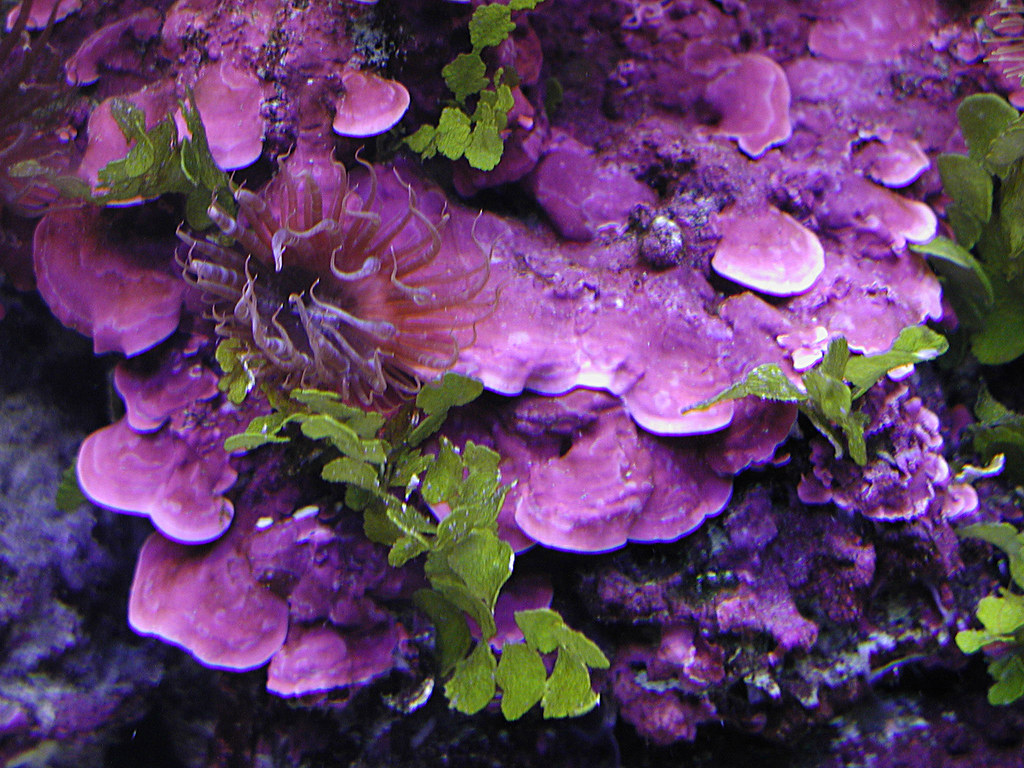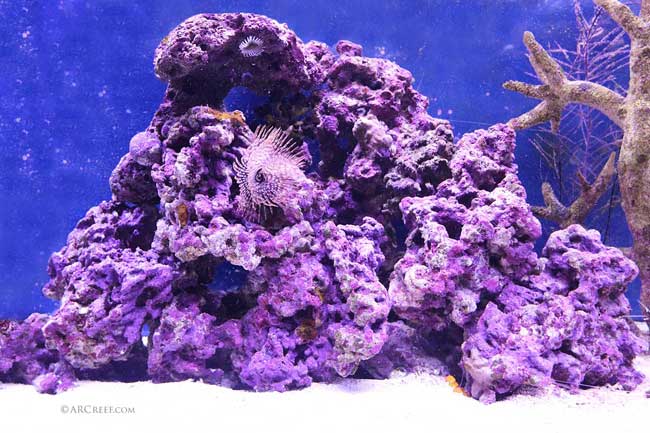Purple Algae In Saltwater Tank
Purple algae in saltwater tanks can be a beautiful and beneficial addition to your aquarium, but it can also be a source of frustration for many aquarium owners. Understanding how to manage and care for purple algae can help you maintain a healthy and thriving marine environment.
Dealing with excessive purple algae growth is a common pain point for many saltwater tank owners. This unsightly growth can quickly take over the tank and compete with other marine life for resources. Additionally, if not managed properly, purple algae can release harmful chemicals that can harm the tank's inhabitants.
The target of purple algae in saltwater tank is to provide a natural source of food for marine life and maintain a healthy aquatic environment. As a coraline algae, it helps to stabilize the pH of the tank and provide important nutrients for other marine life.
In summary, managing purple algae in saltwater tank is crucial for maintaining a healthy marine environment. Proper treatment and care can help reduce excess growth, while also helping to maintain a stable pH and provide important nutrients for other marine life.
Purple algae in saltwater tank - A personal experience
As a long-time saltwater tank owner, I have dealt with my fair share of purple algae issues. At one point, I was ready to give up on my tank altogether because the algae growth had become so difficult to manage. However, after doing some research and talking with other aquarium enthusiasts, I was able to find some effective solutions.
One of the best tips I received was to maintain a consistent tank cleaning schedule and incorporate a natural source of purple algae control, such as adding some hermit crabs to the tank. While it took some time, my tank is now thriving and the purple algae growth is under control.
Effective treatment for purple algae in saltwater tank
One effective treatment for purple algae in saltwater tanks is to incorporate a natural source of control, like adding some hermit crabs or other natural algae-eaters to the tank. Additionally, maintaining a consistent cleaning schedule can help to reduce excess growth and keep the tank healthy. Another effective solution is to add live rock to the tank, which can help to reduce algae growth and provide important nutrients for other marine life.
The importance of proper lighting
Proper lighting is also crucial for managing purple algae growth in saltwater tanks. It's important to avoid excessive lighting, which can encourage rapid algae growth. Using a quality lighting system with a balanced spectrum can help to maintain a healthy tank environment and promote healthy algae growth. Additionally, implementing a consistent lighting schedule can help to reduce algae growth and keep the tank healthy.
Factors that affect purple algae growth
Several factors can affect purple algae growth in saltwater tanks, including lighting, water quality, and nutrient levels. It's important to monitor these factors regularly and make appropriate adjustments to maintain a healthy tank environment.
Frequently asked questions about purple algae in saltwater tank
1. How can I prevent purple algae from growing in my tank?
Preventing purple algae growth involves maintaining a healthy tank environment, including proper lighting, water quality, and nutrient levels. Additionally, implementing a consistent cleaning schedule and adding live rock or natural algae-eaters can help to control algae growth.
2. Is purple algae harmful to other marine life?
While purple algae is a beneficial and natural source of food for marine life, excessive growth can be harmful to other marine life in the tank. This is because the algae can compete with other organisms for resources and release harmful chemicals that can affect the tank's inhabitants.
3. Can purple algae be removed from the tank completely?
While it may be difficult to completely remove purple algae from a saltwater tank, it can be managed effectively with a consistent cleaning schedule, natural algae-eaters, and proper lighting. Additionally, incorporating live rock into the tank can help to reduce excess growth and ensure a healthy tank environment.
4. What should I do if I notice excessive purple algae growth in my tank?
If you notice excessive purple algae growth in your saltwater tank, it's important to take immediate action to prevent the algae from overtaking the tank. This may involve implementing a stricter cleaning schedule, adding natural algae-eaters or live rock to the tank, and monitoring water quality and nutrient levels closely.
Conclusion of purple algae in saltwater tank
In conclusion, managing purple algae in saltwater tank is essential for maintaining a healthy marine environment. By implementing a consistent cleaning schedule, adding natural algae-eaters or live rock, and monitoring water quality and nutrient levels, you can manage purple algae growth effectively and ensure a thriving saltwater tank.
Gallery
Aquarium Closeup Of Purple Coralline Algae | Closeup View Of… | Flickr

Photo Credit by: bing.com / algae coralline reef saltwater
Coralline Algae - The Ultimate Guide | ARC Reef

Photo Credit by: bing.com / algae coralline rock live ocean aquarium plants pacific reef purple saltwater coral look list growing arc fish marine corallina tanks
Coralline Algae In Saltwater Aquarium: Purple Rock : Rotter Tube Reef

Photo Credit by: bing.com / algae tank reef purple saltwater coralline aquarium rock grow
Coraline Algae Purple Color Varies Means Anything ? - Reef Central
Photo Credit by: bing.com / algae coraline purple color anything varies means
How To Grow Coralline Algae- Accelerate Purple Algae Growth! | Algae

Photo Credit by: bing.com / alga coralina saltwater algae coralline acuarios marinos
